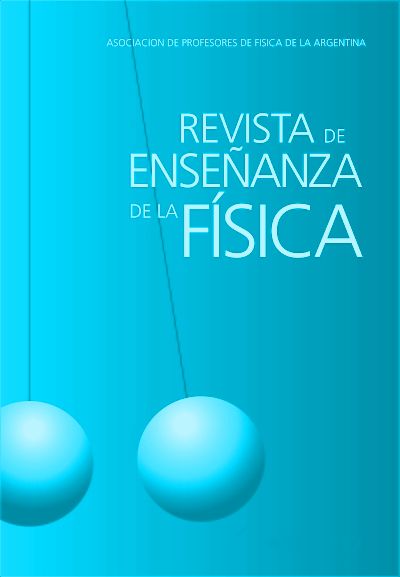Implementation of Peer Instruction in General Physics courses: systematization of an experience in the Technological Institute of Costa Rica
DOI:
https://doi.org/10.55767/2451.6007.v30.n2.22735Keywords:
Active learning, Peer instruction results, Physics teachingAbstract
One of the biggest challenges that science teachers face is that students understand the subject they explain in class. It is common to hear in conversations among teachers about how their students fail in a test on very similar question, or even the same, to the one that have been discussing in class. Due to this widespread concern people have questioned the effectiveness of traditional teaching methods (lectures), and instead have proposed different active learning methodologies in which the traditional role of both teacher and student is transformed. In this context, the Peer Instruction (PI) technique has been shown to be practical and easily adaptable to the reality of different courses, for which it was adopted by some General Physics teachers at the Instituto Tecnológico de Costa Rica (TEC).This paper will present the way in which the Peer Instruction technique was used for “Physics I”, a university introductory course for engineering and architecture students, and we will show some quantitative and qualitative results obtained during its application.References
Carr, R., Palmer, S. y Hagel, P. (2015). Active learning: The importance of developing a comprehensive measure. Active Learning in Higher Education, 16(3), 173-186.
Crouch, C. H., Watkins, J., Fagen, A. P. y Mazur, E. (2007). Peer instruction: Engaging students one-on-one, all at once. Research-Based Reform of University Physics, 40-95.
Deslauriers, L., Schelew, E. y Wieman, C. (2011). Improved learning in a large-enrollment physics class. Science, 862-864.
Fraser, J. M., Timan, A. L., Miller, K., Dowd, J. E., Tucker, L. y Mazur, E. (2014). Teaching and physics education research: bridging the gap. Reports on Progress in Physics, 032401.
Gay, L. R., Mills, G. E. y Airasian, P. W. (2012). Educational research: Competencies for analysis and applications, student value edition. Upper Saddle River, NJ: Merrill.
Gay, L. R. y Mills, G. E (2016). Educational research: Competencies for analysis and applications. Up-per Saddle Ridge, NJ: Pearson.
Hestenes, D., Wells, M. y Swackhamer, G. (1992). Force concept inventory. The physics teacher, 141-158.
Hilborn, R. C. (1997). Peer instruction: A user's manual, by Eric Mazur. Physics Today, 68-69.
Lederman, N. G. y Abell, S. K. (2014). Handbook of Research on Science Education (Volume 2). Rou-tledge: (Eds.).
Luján-Mora, S. (2013). De la clase magistral tradicional al MOOC: doce años de evolución de una asig-natura sobre programación de aplicaciones web. Revista de Docencia Universitaria, 279-300.
Ross, L. (1977). The Intuitive Psychologist and His Shortcomings: Distortions in the Attribution Process. En Advances in experimental social psychology. Academic Press, 173-220.
Wandersee, J. H., Mintzes, J. J. y Novak, J. D. (1994). Research on alternative conceptions in science. En J. H. Wandersee, J. J. Mintzes y J. D. Novak, Handbook of research on science teaching and learning (págs. 177-210). New York: Simon y Schuster - Prentice Hall International.
Wieman, C. E. (2014). Large-scale comparison of science teaching methods sends clear message. Pro-ceedings of the National Academy of Sciences, 8319-8320.
Wieman, C. y Welsh, A. (2016). The Connection Between Teaching Methods and Attribution Errors. Educational Psychology Review, 645-648.
Downloads
Published
Issue
Section
License
Copyright (c) 2018 Natalia Murillo-Quirós, Mónica Hernández-Campos

This work is licensed under a Creative Commons Attribution-NonCommercial-NoDerivatives 4.0 International License.
Aquellos autores/as que tengan publicaciones con esta revista, aceptan los términos siguientes:Los autores/as conservarán sus derechos de copiar y redistribuir el material, bajo los términos estipulados en la Licencia de reconocimiento, no comercial, sin obras derivadas de Creative Commons que permite a terceros compartir la obra bajo las siguientes condiciones:
- Reconocimiento — Debe reconocer adecuadamente la autoría, proporcionar un enlace a la licencia e indicar si se han realizado cambios. Puede hacerlo de cualquier manera razonable, pero no de una manera que sugiera que tiene el apoyo del licenciador o lo recibe por el uso que hace.
- NoComercial — No puede utilizar el material para una finalidad comercial.
- SinObraDerivada — Si remezcla, transforma o crea a partir del material, no puede difundir el material modificado.
- Los autores/as podrán adoptar otros acuerdos de licencia no exclusiva de distribución de la versión de la obra publicada (p. ej.: depositarla en un archivo telemático institucional o publicarla en un volumen monográfico) siempre que se indique la publicación inicial en esta revista.
- Se permite y recomienda a los autores/as difundir su obra a través de Internet (p. ej.: en archivos telemáticos institucionales o en su página web) antes y durante el proceso de envío, lo cual puede producir intercambios interesantes y aumentar las citas de la obra publicada. (Véase El efecto del acceso abierto).










